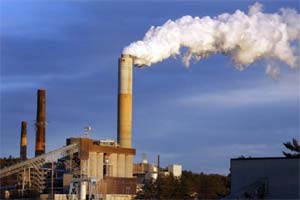Given that perhaps the best outcome of the climate-change talks in Paris will be to accept as binding the emission cut offers that various countries have made, economic affairs secretary Shaktikanta Das has done well to draw attention to the charade of OECD-financing to help developing countries fight global warming. It is true that countries like China and India add the most to the rise in global emissions, but the reason why that is a problem – The Economist reckons if annual emissions remain at current levels, and the hike in temperatures is to be kept below 20C, the emissions space runs out in 30 years – is that richer countries like the US emitted so much, they used up the common space for countries like China and India whose per capita emissions are a fraction of those in the west. It is for this reason that the West agreed to $100 bn of annual finance to help developing economies to fight climate change – a pre-Paris OECD report asserts this has already reached levels of $57 bn. As Das points out, the data is specious since it refers to pledges to climate funds, not actual disbursements; it includes any existing multilateral aid that has even the slightest climate co-benefit, even debt flows at commercial/near-commercial terms and FDI. Even when the pledge was made, $100 bn was tiny compared to what was needed, but the OECD has even exaggerated $2.2 bn of genuine additional climate-related funding to $57 bn – if Softbank finally invests the $20 bn it has promised to do in India’s solar industry over a decade, it will be because India is offering commercial returns to it, but OECD will count this as developmental financing.
India has made much of its 2022 target of 175GW of renewables – Prime Minister Modi has written an oped in the Financial Times on this – but the implications of this need further study. For one, since hydro- or gas-based power stations need to be kept on standby as solar/wind do not deliver 24×7, these costs need to be factored in along with the costs of building fresh transmission lines for evacuating solar/wind power. The way technology stands today, coal remains India’s best best – that is why Chief Economic Advisor Arvind Subramanian’s article, also in FT, cautioning against the West’s move to phase out fossil fuels, needs to be taken seriously, and India’s best bet lies in creating a global green-and-clean coal initiative. In its euphoria over its renewables target, and desire to be on the US’ right side, India must ensure against this ‘carbon imperialism’ at Paris and later.
Apart from the $100 bn-type of funding, India has to push for far greater R&D in areas to help both prevent and adapt to climate change. R&D of the type Tesla is doing on batteries for storing solar power, for instance, has to be stepped up, and then provided free to developing countries – as Bill Gates points out in The Economist, annual spending on energy research in the US is $6 bn as compared to $30 bn on medical research; ditto for research on heat/drought/flood/saline-
